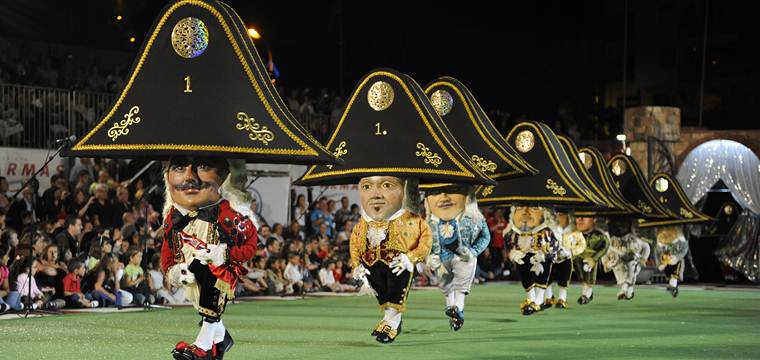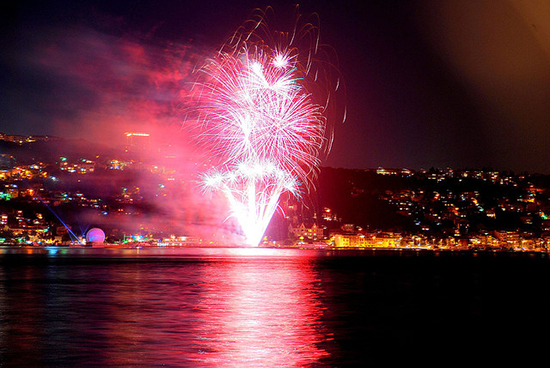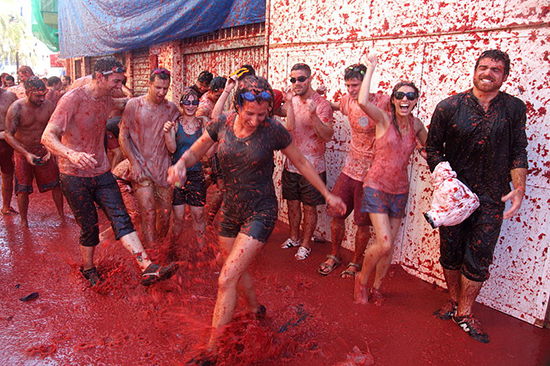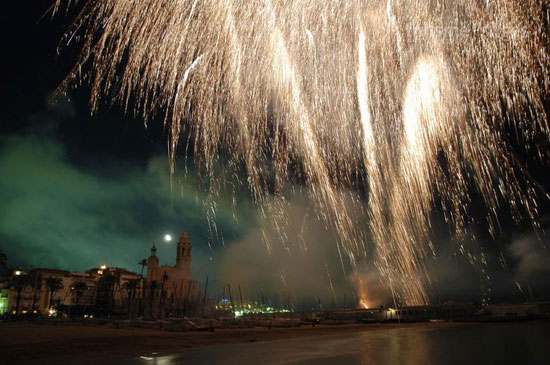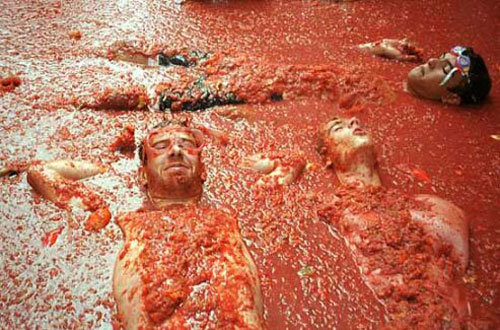Are you from a small town? In this post, we’d like to suggest we visit some fiestas. Spain has festivities for all tastes- religious, pagan, bullfighting themed, anti-bullfighting themed, unusual, but most of all, highly entertaining. We’re at the height of summer now, and that is precisely the season when most patron saint festivities are celebrated in most Spanish towns and villages. And with 8,112 municipalities across Spain, there is no excuse not to have a great time.
New Year’s Twelve Grapes in Mid-August
The Granadan municipality of Bérchules celebrates a summery New Year’s since 1994. And it’s not because they’ve lost their marbles. On that New Year’s Eve, there was a power shortage that kept the town’s neighbors from eating the traditional twelve grapes right at the stroke of midnight. It was there and then that they instituted the tradition of eating their New Year’s grapes in the summer, thus transferring the December 31st celebrations to the first weekend of August. And you can’t blame them- it’s better to be safe than sorry. But in the meantime, the people of Bérchules will never miss out on another New Year’s Eve celebration.
The Tomatina
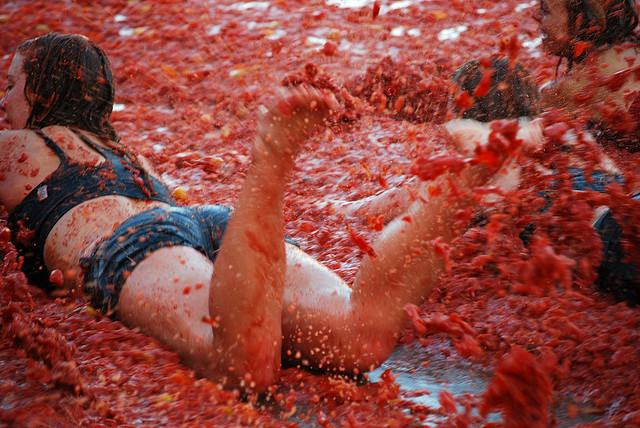
Buñol’s Tomatina, for those not familiar with it, is a festival in which participants throw ripe tomatoes at each other, and 145.000 kilos of them specifically this year. The festival’s wide international appeal attracts visitors from many nationalities and every corner of the globe, as well as youths from all across Spain looking to get their adrenaline fix and have an excellent time. This little town in the Valencian Community draws in nearly 40,000 tourists every year, quadrupling their local population for the event. This 2015 edition of the Tomatina marks the 70th anniversary of the festival.
La Danza de los Enanos
This traditional summer celebration in Santa Cruz de La Palma (Canary Islands) is a must. Just so you get the idea: 24 men dance the polka as they tour the town. They then enter a little hut and emerge as tiny dwarfs with giant heads and small bodies. La danza de los enanos (literally, the dance of the dwarfs) is dedicated to the figure of the Virgin of las Nieves, once every 5 summers, and always held in those years ending in a “0” or a “5”.
The Colacho

Photo credit: asir.thomas
This is celebrated on the feast of Corpus Christi, in the small town of Castrillo de Murcia, in Burgos. This town’s patron saint festivities are so intriguing they were declared of Tourist Interest in the Castile and León Community. But what exactly goes on there? To start off, it should be noted that a Colacho is an extravagant and striking character resembling a demon that jumps over the town’s newborns in order to rid them of original sin. No doubt it is quite a spectacle to behold. The men of Castrillo de Murcia done their demon costumes and become Colachos, while the infants’ mothers proudly watch as their babies take part in this strange tradition.
Duck Trapping
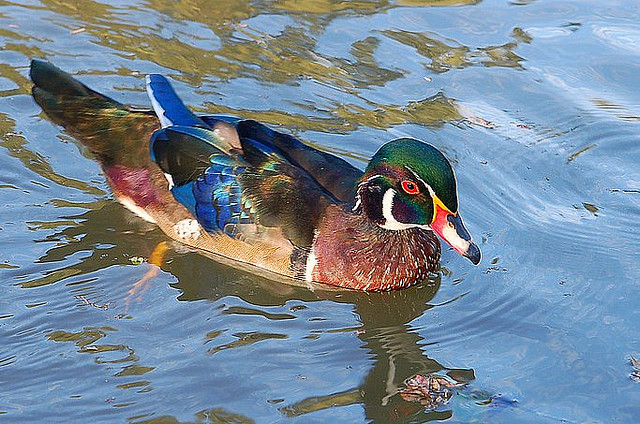
These festivities are celebrated in Sagunto, Valencia, and they always bring with them a fair deal of controversy. The point is to swim and catch as many of the 110 ducks that locals release from nearby boats as possible. This maritime event takes place every August 15th, bringing duck and man face to face. As mentioned, these festivities are always controversial and have been harshly criticized in recent years by ecologists, as well as animal welfare societies and nature protection agencies alike. In fact, the festivities were temporarily forbidden from 2006 to 2011, after the city council had to fine some of their participants. The truth is that Sagunto’s festivities have been celebrated since 1946, and their locals take to them as a duck takes to water…

 English
English Français
Français Deutsch
Deutsch Italiano
Italiano Español
Español